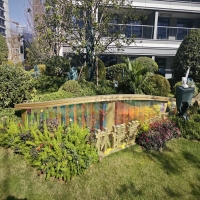Welcome to the website for landscape facilities products and knowledge.
What are the most common trade-offs between cost and quality in landscape chair production?
When it comes to landscape chair production, balancing cost and quality is a critical challenge for manufacturers and buyers alike. The most common trade-offs often revolve around material selection, durability, and design complexity.
1. Material Choices: High-quality materials like teak, powder-coated aluminum, or marine-grade polymers offer superior durability but come at a higher cost. Budget-friendly options like untreated pine or low-grade plastics may save money initially but often lack longevity.
2. Durability vs. Short-Term Savings: Premium materials resist weathering, UV damage, and heavy use, reducing long-term replacement costs. Cheaper alternatives may require frequent repairs or replacements, increasing overall expenses.
3. Design Complexity: Intricate designs or custom finishes elevate aesthetics but raise production costs. Simplified designs cut expenses but may compromise visual appeal or functionality.
4. Labor and Craftsmanship: Handcrafted chairs with meticulous detailing command higher prices, while mass-produced items reduce costs but may lack uniqueness or precision.
5. Environmental Impact: Sustainable materials and eco-friendly processes often cost more but align with growing consumer demand for green products.
Ultimately, the right balance depends on the intended use, budget, and long-term value. Investing in higher-quality materials and craftsmanship can pay off in durability and customer satisfaction, while budget options may suit temporary or low-traffic settings.
Related search:

Recommendation
Metal and acrylic color-changing combined curtain wall for large-scale public landscape facilities